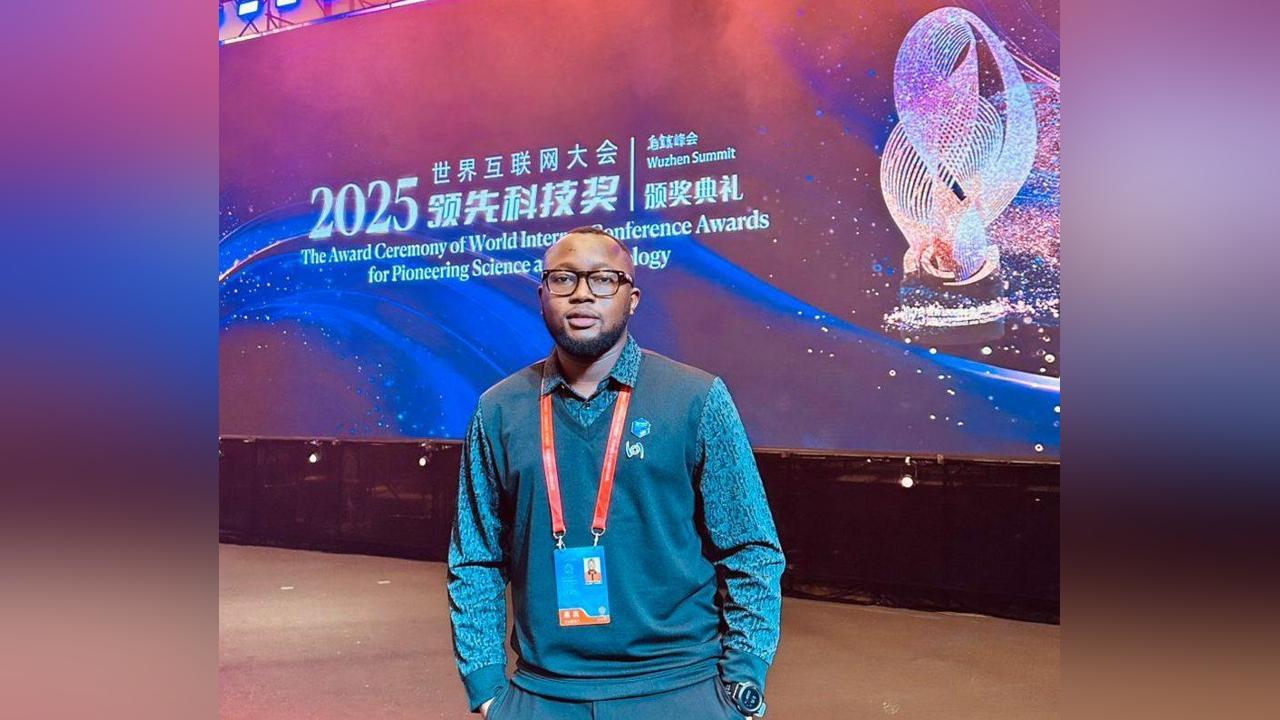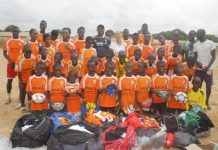By Muhammed Lamin Drammeh
Africa-Press – Gambia. From my dormitory in Beijing, I follow the news from home every day with a mix of hope and anxiety sometimes. I read and watch the political debates on social media, and most of the time not friendly debates, and the persistent challenges of underemployment and unemployment, as well as our agricultural struggles. The distance has crystallised a crucial understanding for me: The Gambia’s most significant untapped resource is not in the ground or in foreign aid pledges; it is the collective intelligence, energy, and voice of its people. The key to unlocking this resource is a concept my class group was assigned to study and conduct an in-class seminar on: Communication for Development (C4D). In simple terms, it’s a philosophy that moves beyond top-down commands and puts dialogue and community at the heart of national development. It’s the practical application of our traditional values of community and consultation, amplified for the contemporary society, especially for The Gambia.
In our tradition, I was taught that the griot, or jali, was responsible for preserving our history and speaking truth to power. I believe this role should now be embraced by our modern media houses. Today, the media is free, unlike during the 22 years of leadership under Yahya Jammeh, when any journalist who believed that the pen was mightier than the sword either went into exile or, for those who remained, some ultimately lost their lives. In today’s Gambia, our media houses and journalists should become our collective jali, but with a critical update: they should facilitate a conversation, not just deliver a monologue in reading news. The old state-controlled model, which treated citizens as a passive audience, is obsolete. The C4D approach, as seen in powerful examples like Breeze FM in Zambia, reimagines the media as a public square. Imagine a community radio station in Baddibu or Basse not just broadcasting or reading a post from a politician’s timeline as news, but listening. Let’s say a journalist who wouldn’t just report from a studio. He would take a recorder to Wuli or Farafenni and sit with a group of farmers. He wouldn’t always ask what the government is doing wrong, but rather, what is the problem with rice yields of the farmers, and what they tried that never worked or solved their problems. He would then record the village elder, the young graduate with new ideas, and the women’s group discussing their shared challenges. When that recording is played on the air, several things happen: people hear their own struggles reflected, affirming that their concerns matter; the entire listening community engages with the issue, often leading to local solutions before even appealing to the government; and it becomes publicly documented that in Village X, the fertilizer promised by a certain politician never arrived. This creates a powerful, organic form of social pressure that is far more effective than a thousand angry social media posts. This is C4D in action. It transforms the media from a megaphone for the powerful into a listening device for the people and a mirror for the government. For a young democracy like ours, it should not be optional; it should be the bedrock upon which trust and accountability are built.
But again, a free media is a double-edged sword. As we have all seen, our WhatsApp groups and social media feeds are flooded with misinformation, fake job announcements, inflammatory tribal rhetoric, and distorted political claims. This toxic environment poisons our democracy and divides us. This is where media literacy becomes our essential shield. Media literacy, in the C4D context, is not just about teaching people in classrooms. It’s about a national conversation on how to consume information. We need radio talk shows where a host breaks down a viral post, explaining how false the information is. Imagine if Omar Saibou’s Infor Check partners with the Ministry of Information to train our communities on misinformation. Imagine if our civil society organizations organized community workshops where we practice deconstructing a politician’s speech, questioning the promises of 50,000 jobs. What sectors? What is the timeline? How will it be funded? This is the modern version of critical thinking—”conscientisation” as Paulo Freire called it. When a youth in Kiang Jaali can spot a fake news story, when a farmer in Baddibu, India, can question the promises of our politicians, they are no longer passive victims of information. They become active, discerning citizens. This is the first line of defense against manipulation and a prerequisite for the kind of informed, issue-based politics we desperately need.
In The Gambia, we are often referred to as a youthful nation, but to me, this feels less like a compliment and more like a ticking time bomb. Many people I know are either working for low pay or are unemployed and lacking hope. The government’s response has often been to promise jobs from above, using a top-down approach that has consistently failed. C4D flips this script. It asserts that young people are not the problem, but are the co-creators of the solution. Instead of a senior government official designing a youth program in Banjul or Kanifing, imagine a Youth Dialogue Circle in every major region. In these circles, using participatory methods, young people would map out their own realities, voicing concerns such as, for example: “I have an IT certificate, but no one hires without 3 years of experience,” or, “We have mangoes rotting in my village, but no means to process them into juice,” or, “The application process for the Youth Fund is too complicated and biased.” These are not just complaints; they are data points for a national youth strategy, generated by the youth themselves. This process, much like the Ethiopia Youth Dialogues, builds agency and hones the very skills of critical thinking, collaboration, and leadership that the job market demands. This dialogue can then fuel a national Entertainment-Education campaign. A popular TV drama on GRTS, co-written by young Gambians, could follow the story of a graduate who, frustrated by the lack of jobs, mobilizes her friends to start a small business recycling plastic waste. The show would dramatise the real challenges, access to microcredit, bureaucratic hurdles, but also model perseverance, innovation, and collective action. It would show my generation that their power lies not in waiting for a job, but in creating one.
Honesty, the true power of C4D is how these elements synergize. A media-literate youth, engaged in dialogue, can use a vibrant, accountable media to advocate for their needs. They can use their IT skills to create a mobile app, inspired by Tanzania’s First Mile Project, that gives farmers real-time prices, thus creating a new tech-based service industry while solving an agricultural problem. The farmer, empowered by participatory extension services like the proderith model, can then become a source of stable raw materials for youth-led agri-businesses. The community radio station provides a platform for all these actors: the farmer, the youth entrepreneur, and the local official to come together, debate, and collaborate. This creates a virtuous cycle of accountability, innovation, and economic activity.
Our journey as a country now not just be about changing a government; it should be about changing a system that promotes communication for development. Our system can only be truly transformed by embedding a new culture of communication, one that is horizontal, not vertical; dialogic, not dictatorial. C4D is the framework for this new culture. It is the practical application of our traditional values of community and consultation, amplified for the 21st century. It is about harnessing our greatest asset: our collective voice. By investing in a media that listens, an education that teaches critical thinking, and platforms that empower every Gambian, from the farmer in Foni to the graduate in Kanifing, to be part of the solution, we can build a Gambia that is not only democratic and accountable but also prosperous and unified. It is a Gambia where no one is left behind because everyone has a seat at the table. And that is a Gambia worth building, one conversation at a time.
The author, Muhammed Lamin Drammeh (ML Drammeh), is a Gambian student currently studying a master’s in international communication and journalism at the Communication University of China.
Source: The Standard Newspaper | Gambia
For More News And Analysis About Gambia Follow Africa-Press






